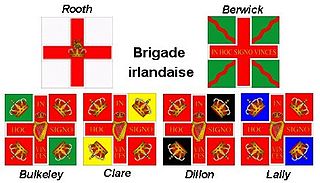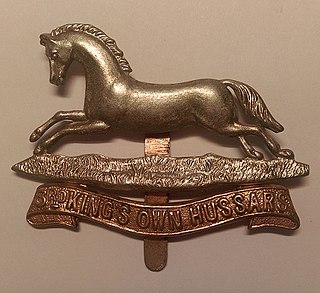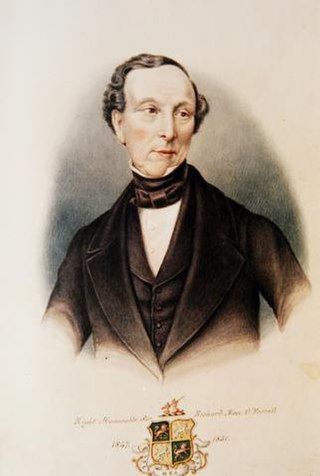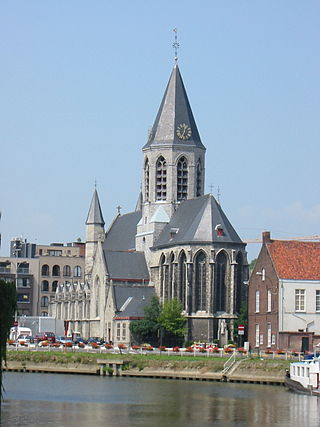Related Research Articles

The Treaty of Limerick, signed on 3 October 1691, ended the 1689 to 1691 Williamite War in Ireland, a conflict related to the 1688 to 1697 Nine Years' War. It consisted of two separate agreements, one with military terms of surrender, signed by commanders of a French expeditionary force and Irish Jacobites loyal to the exiled James II. Baron de Ginkell, leader of government forces in Ireland, signed on behalf of William III and his wife Mary II. It allowed Jacobite units to be transported to France, the diaspora known as the Flight of the Wild Geese.

The Irish Brigade was a brigade in the French Royal Army composed of Irish exiles, led by Lord Mountcashel. It was formed in May 1690 when five Jacobite regiments were sent from Ireland to France in exchange for a larger force of French infantry who were sent to fight in the Williamite War in Ireland. The regiments comprising the Irish Brigade retained their special status as foreign units in the French Army until nationalised in 1791.

Ó Fearghail is a family name of the Irish nobility from County Longford who were historically the Princes of Annaly. The patronym means "descendant of Fearghail", whose name means "man of valour". Fearghail was a great-grandson of Angaile, the 10th-century King of Fortúatha who conquered and gave his name to Annaly, and his Ó Fearghail descendants were the Princes of Annaly for 6 centuries. Angaile was chief of the Conmhaícne Angaile. The lineage of Fearghail also provided chiefs of the Dál Messin Corb and its derivative Uí Garrchon. The surname became Farrell.
Sir Rory O'Moore, also known Sir Roger O'Moore or O'More or Sir Roger Moore, was an Irish landowner, and is most notable for being one of the four principal organizers of the Irish Rebellion of 1641.

The Sack of Wexford took place from 2 to 11 October 1649, during the Cromwellian conquest of Ireland, part of the 1641–1653 Irish Confederate Wars. English Commonwealth forces under Oliver Cromwell stormed the town after negotiations broke down, killing most of the Irish Confederate and Royalist garrison. Many civilians also died, either during the sack, or drowned attempting to escape across the River Slaney.

The 3rd Hussars was a cavalry regiment of the British Army, first raised in 1685. It saw service for three centuries, including the First and the Second World Wars, before being amalgamated with the 7th Queen's Own Hussars, to form the Queen's Own Hussars in November 1958.
Sir James Dillon was an officer in the armies of the Irish Confederate Catholic during the Irish Confederate Wars (1641–53) and an MP for County Westmeath in the Irish House of Commons. He was likely born at Kilfaughny, Athlone and lived in the vicinity.
Presented below is a chronology of the major events of the Irish Confederate Wars from 1641 to 1653. This conflict is also known as the Eleven Years War. The conflict began with the Irish Rebellion of 1641 and ended with the Cromwellian conquest of Ireland (1649–53).

Richard More O'Ferrall was an Irish politician, a high level British government official and a Governor of Malta. Born to a noble Irish Catholic family at Balyna, he was the eldest son and heir of Ambrose More O'Ferrall, Lord of Laois and Prince of Annally. Educated at Stonyhurst College, More O'Ferrall entered politics young, becoming Member of Parliament for Kildare in 1830. In 1839, More O'Ferrall married Matilda, daughter of The 3rd Viscount Southwell, KP. After holding many senior roles, he was appointed Governor of Malta in 1847, a post he held until 1851. He was known to be a very honourable man and was made a deputy lieutenant and a justice of the peace as well as a Member of the Privy Council of the United Kingdom. He stepped down as a Member of Parliament for Kildare in 1865. More O'Ferrall was widely respected, both in Ireland and Great Britain and has been praised for his achievements while Governor of Malta.

The Tangier Garrison was the land force which oversaw the defence of English Tangier between 1661 and 1684 when it was evacuated. It was part of the English Army, the de facto standing army that Charles II established following the Restoration. Charles II received Tangier as part of the Marriage Treaty with Portugal in 1661. He appointed Henry Mordaunt, 2nd Earl of Peterborough as governor and, on 30 January 1662, the new garrison took up its duties. Peterborough was not a successful appointment as governor, and Andrew, Lord Rutherford, was appointed in 1662/1663 to replace him.
Robert King, 2nd Baron Kingston was an Anglo-Irish nobleman.

The Irish Army or Irish establishment, in practice called the monarch's "army in Ireland" or "army of Ireland", was the standing army of the Kingdom of Ireland, a client state of England and subsequently of Great Britain. It existed from the early 1660s until merged into the British Army in 1801, and for much of the period was the largest force available to the British monarchy, being substantially larger than the English and Scottish establishments.

Major General Francis Fergus O’Farrellc. 1650 to 1712, was an Irish-born professional soldier who served in the Dutch States Army under William III until 1689, when he transferred into the English Army. During the Nine Years' War in 1695, he was cashiered for his premature surrender of the town of Deinze, then reinstated in 1696 and served in the War of the Spanish Succession.
Lisagh Farrell or Lewis Farrell was an Irish soldier of the seventeenth century.
Sir John Fitzgerald was an Irish soldier of the seventeenth century, best known for serving as Governor of Tangier during the 1660s. He commanded the Tangier Garrison during this time. He later participated in the Williamite War in Ireland (1689–91) on the Jacobite side.
The Sale of Dunkirk took place on 27 October [O.S. 17 October] 1662 when Charles II of England sold his sovereign rights to Dunkirk and Fort-Mardyck to his cousin Louis XIV of France.
Richard O'Farrell was an Irish soldier of the seventeenth century most notable for his service in the Irish Confederate Wars from 1642 to 1651. He rose to the rank of Lieutenant General.

William Dorrington was an English army officer. Contemporary sources often spell his surname as "Dorington", or "Dodington".
Dominic Sheldon, often written as Dominick Sheldon, was an English soldier. A leading Jacobite he served in James II's Irish Army during the Williamite War between 1689 and 1691. He was a noted cavalry commander, present at the Battle of the Boyne and Battle of Aughrim. Later after going into exile, he rose to the rank of lieutenant general in the French Army. He was also remained a prominent courtier at the Jacobite court in exile at Saint Germain.

The Royalist Army in Exile was the army formed by those loyal to Charles II from 1656 to 1660 during his exile from the throne. They were a mixture of Royalist troops from his three Kingdoms including men from England and Scotland, with the bulk being Catholics from Ireland, many of whom had previously served in the Irish Confederate armies.
References
- ↑ D'Alton p.359-61
- ↑ "Longford musketeers". 12 February 2013.
- ↑ Childs p.61
- ↑ D'Alton p.362